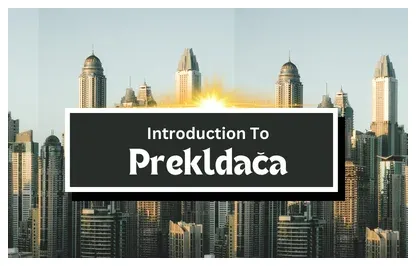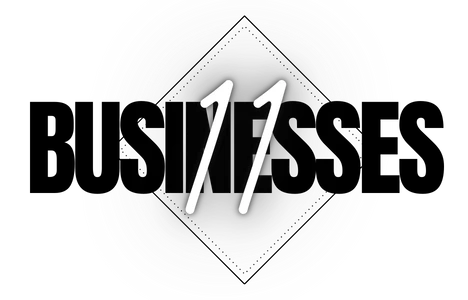Understanding Prekldača: A Comprehensive Guide to Its Cultural and Historical Significance

Prekldača is a term that holds rich cultural and historical significance across various societies. It can refer to an object, tradition, or practice that embodies the values and heritage of a community.
This guide aims to provide a thorough understanding of He, exploring its definition, importance, and roles in different cultural contexts.
By examining how He is used in daily life, its evolution over time, and the challenges associated with its preservation, readers will gain a deeper appreciation for this unique aspect of cultural heritage.
Whether you are a scholar, a cultural enthusiast, or simply curious, this guide offers valuable insights into the significance of prekldača and its impact on maintaining cultural identity and continuity.
Understanding Prekldača: An In-Depth Guide
Prekldača is a term that may refer to various concepts depending on cultural context. It could be an object, a tradition, or a practice with significant historical and cultural value.
Understanding its definition and origin helps in appreciating its role in different societies.
Cultural Significance
In many cultures, He represents more than just an item or practice. It embodies the values, traditions, and history of a community. This cultural significance can make He a key element in understanding the identity and heritage of a group.
Why is Prekldača Important?
Preservation of Heritage
Prekldača plays a crucial role in preserving cultural heritage. By maintaining traditions associated with He, communities ensure that their history and values are passed down through generations. This preservation helps in keeping cultural practices alive.
Symbol of Identity
He often serves as a symbol of cultural identity. It reflects the unique characteristics and traditions of a community, helping individuals connect with their roots and heritage. This symbolic value makes Him an important aspect of cultural pride.
How is Prekldača Used in Daily Life?
Traditional Practices
Prekldača holds a cherished place in traditional practices and ceremonies within many cultures. It often plays a central role in festivals, rituals, and everyday activities that are steeped in cultural significance.
For example, in some communities, He may be used in religious ceremonies to invoke blessings or celebrate important milestones. During festivals, it might be prominently displayed or utilized in specific rituals that mark seasonal changes or historical events.
In daily life, He could be part of routine practices that reinforce cultural values. This might include using it in traditional crafts, cooking methods, or family gatherings.
These practices ensure that He remains an integral part of daily routines, helping to preserve cultural heritage and keep traditional values alive.
Modern Adaptations
As societies evolve, the role of He often adapts to fit contemporary contexts while still honoring its traditional roots. Modern adaptations might involve incorporating He into new types of cultural events or exhibitions.
For instance, what was once a traditional practice may now be part of educational programs or public art displays, making it accessible to a broader audience.
He may also be adapted in design and function to appeal to current tastes or technological advancements.
This could mean modernizing traditional artifacts or practices in ways that align with contemporary lifestyles while retaining their original significance. These adaptations help ensure that He remains relevant and continues to be appreciated in the present day.
Where Can You Find Prekldača?
Cultural Institutions
Cultural institutions such as museums and cultural centers are key places where you can find prekldača. These institutions often curate exhibits that showcase the historical and cultural significance of He.
Museums may feature artifacts, historical documents, and interactive displays that provide insight into its importance and usage across different periods and regions.
Cultural centers may host events, workshops, and educational programs focused on He, offering opportunities to engage with it in various ways.
These settings not only preserve He but also facilitate learning and appreciation, making it accessible to both locals and visitors interested in cultural heritage.
Private Collections and Festivals
In addition to public institutions, He can be found in private collections and at cultural festivals. Private collectors may hold valuable examples of He, often passed down through generations or acquired from various sources.
Visiting private collections can offer a more personal and detailed perspective on He, as collectors may provide unique insights and stories about their items.
Cultural festivals often feature He as part of their celebrations. These festivals may include exhibitions, performances, or demonstrations that highlight He’s role in cultural traditions. Attending these festivals provides a vibrant and immersive experience, allowing individuals to see He in action and understand its significance within the context of contemporary cultural practices.
How Has Prekldača Evolved Over Time?
Historical Development
The evolution of prekldača reflects changes in cultural practices and societal values. Historical records and oral traditions can reveal how He has transformed from its origins to its present state. This evolution showcases the adaptability of cultural traditions.
Contemporary Relevance
Today, He may be represented in new ways that align with modern values and practices. Understanding these contemporary adaptations helps in appreciating how He remains a vital part of cultural identity in the present day.
What Are the Benefits of Preserving Prekldača?
Educational Value
Preserving prekldača offers educational benefits by providing insights into historical practices and cultural heritage. It serves as a valuable resource for learning about past traditions and understanding their impact on the present.
Cultural Continuity
Maintaining He helps ensure cultural continuity. It fosters a sense of identity and connection to the past, allowing future generations to appreciate and uphold their cultural heritage.
What Challenges Are Associated with Prekldača?
Risk of Loss
One major challenge is the risk of losing prekldača due to deterioration or neglect. This loss can occur if proper care and preservation efforts are not made, leading to the potential disappearance of important cultural elements.
Adapting to Change
Another challenge is adapting He to modern contexts while maintaining its traditional significance. Balancing tradition with contemporary values can be difficult, but finding this balance is crucial for preserving the relevance of He.
How Can One Learn More About Prekldača?
Research and Resources
To learn more about prekldača, individuals can explore various resources such as books, articles, and academic studies. These resources provide detailed information and insights into the history and significance of He.
Engaging with Experts
Engaging with cultural experts and participating in events related to He can offer valuable learning experiences. These interactions help deepen understanding and appreciation of He.
Benefits and Challenges of Prekldača
| Benefits | Challenges |
| Maintains cultural heritage | Risk of deterioration |
| Promotes understanding of historical practices | Loss of traditional knowledge |
| Fosters a sense of identity and continuity | Changes in societal values |
| Contributes to cultural appreciation | Difficulty in adapting to modern influences |
This expanded guide offers a comprehensive look at prekldača, covering its definition, significance, usage, and the benefits and challenges associated with its preservation. It provides a thorough understanding of He and its role in cultural heritage.
Frequently Asked Questions (FAQs) About Prekldača
What Does Prekldača Mean?
Prekldača is a term that varies in meaning depending on cultural context. Generally, it refers to an object, tradition, or practice with significant cultural, historical, or symbolic value. The exact meaning can differ based on the region and cultural practices.
How Is Prekldača Used in Different Cultures?
In different cultures, prekldača may be used in various ways. It might be a part of traditional ceremonies, a symbol of cultural identity, or an element of daily life. Its usage reflects the values and practices of the specific culture.
Why Is It Important to Preserve Prekldača?
Preserving prekldača is important because it helps maintain cultural heritage and continuity. It allows future generations to connect with their history and traditions. Additionally, it fosters a sense of identity and pride within communities.
What Are Some Common Challenges in Preserving Prekldača?
Common challenges include the risk of deterioration of physical objects, loss of traditional knowledge, and adapting to modern influences. Addressing these challenges requires careful preservation efforts and respect for traditional practices.
Where Can I Learn More About Prekldača?
You can learn more about prekldača through cultural institutions such as museums and cultural centers. Additionally, engaging with experts, reading relevant literature, and participating in cultural events can provide valuable insights.
How Has Prekldača Changed Over Time?
Prekldača has evolved as societies and cultures have changed. Historical records and traditions can show how its role and representation have shifted. Understanding these changes helps in appreciating the adaptability of cultural practices.
How Can Prekldača Be Adapted for Modern Use?
Adapting prekldača for modern use involves integrating it into contemporary contexts while preserving its traditional values. This can include using it in modern ceremonies, artworks, or cultural events, ensuring it remains relevant and meaningful.
Conclusion
Prekldača is more than just a term; it represents a significant aspect of cultural heritage. Understanding prekldača involves exploring its definition, significance, and various uses in different contexts.
It plays a crucial role in preserving cultural identity and maintaining traditions across generations.
By learning more about He through research, engagement with experts, and participation in cultural activities, individuals can gain a deeper appreciation of its importance.
This comprehensive understanding helps in valuing and preserving He for future generations, ensuring that its cultural significance continues to be recognized and celebrated.





